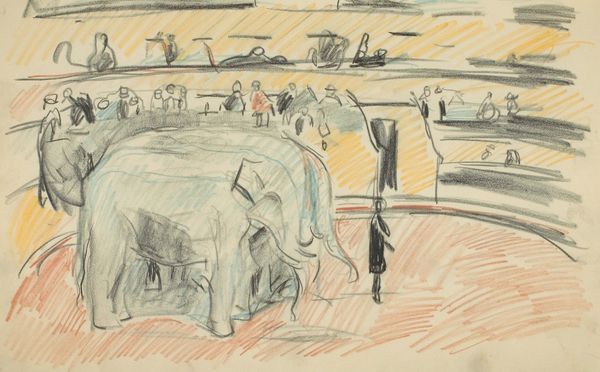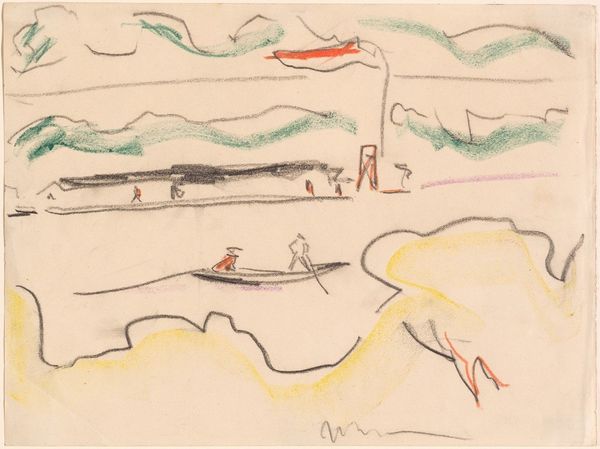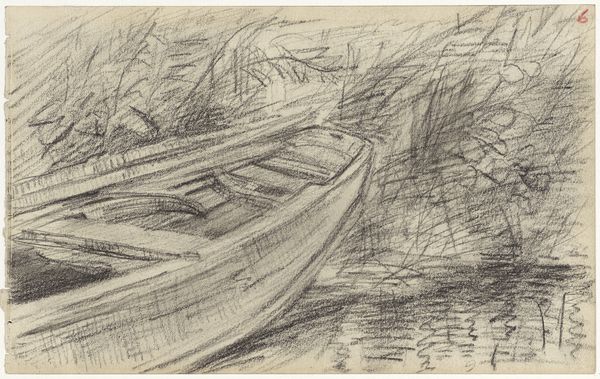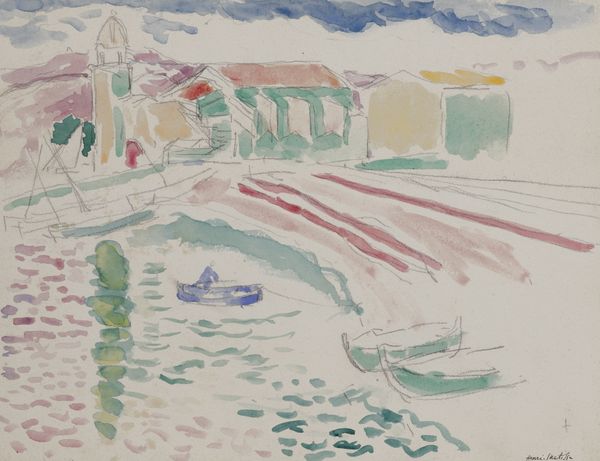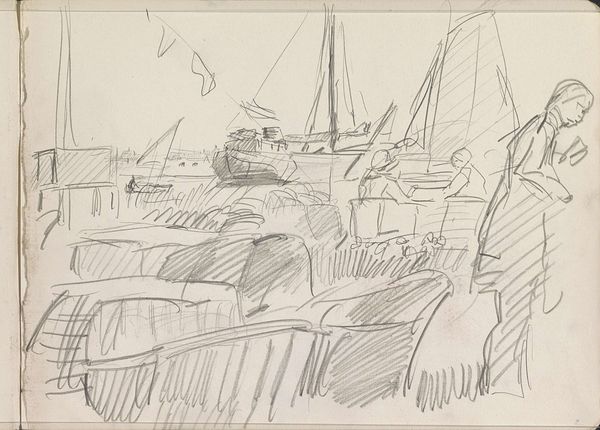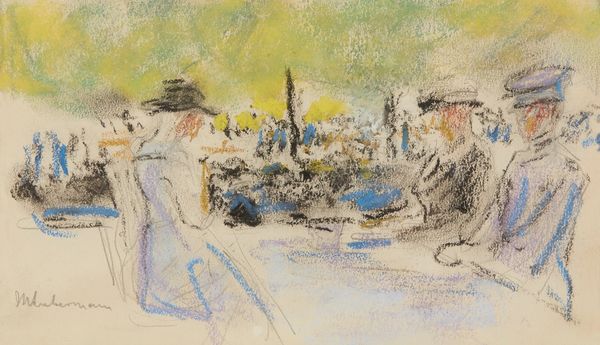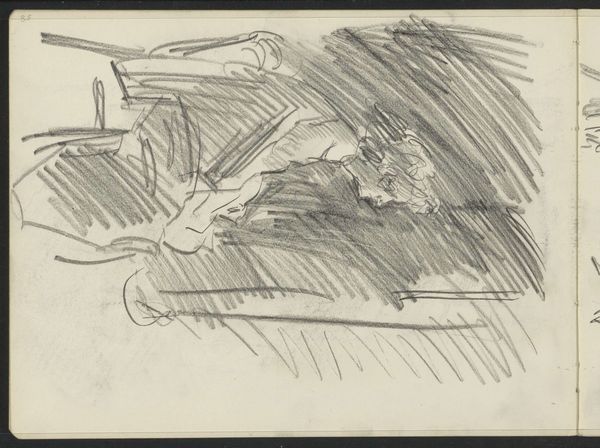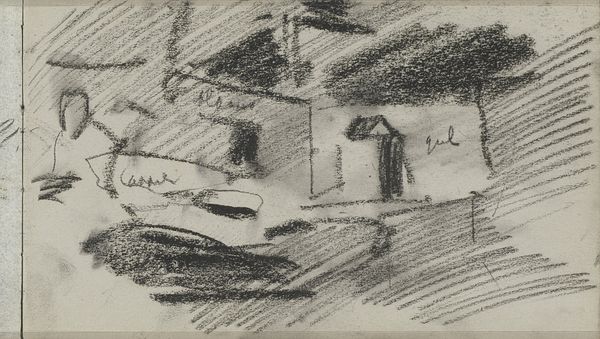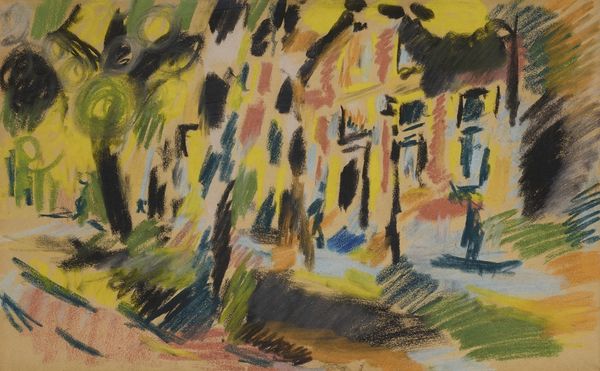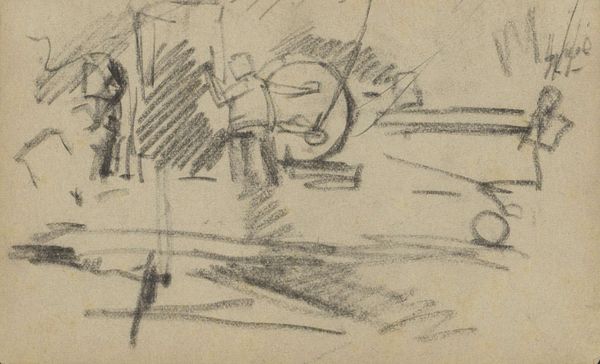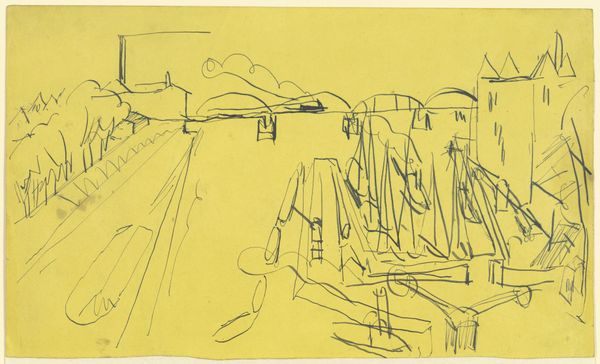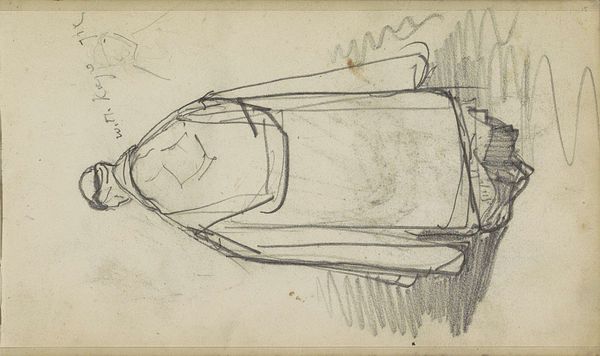
drawing, ink
#
drawing
#
ink drawing
#
pen sketch
#
landscape
#
german-expressionism
#
figuration
#
abstract
#
form
#
ink
#
ink drawing experimentation
#
line
#
cityscape
Copyright: Public Domain: Artvee
Curator: Ernst Ludwig Kirchner created this ink drawing, "Schleppkahn am Elbufer im Hintergrund die Carolabrücke," or "Tow Barges on the Elbe River with the Carolabrücke in the Background" around 1909. What are your initial thoughts? Editor: There's an immediate sense of fractured energy. The angular lines, the slightly jarring color choices—yellow against black, dabs of blue and green—create a feeling of unease and perhaps excitement simultaneously. Curator: It’s interesting you pick up on that sense of unease. Kirchner, along with other Expressionists, was deeply concerned with the alienation and psychological anxieties of modern urban life. The jagged, raw quality of his lines, the distorted perspectives—all speak to that sense of being overwhelmed by the rapidly changing world. We see a tension in the way urban growth affects the natural landscape. Editor: Yes, look at how the bridge in the background is reduced to these abstracted shapes. And the barge itself – that powerful vessel on the Elbe is somewhat crudely depicted as angular shapes rather than a careful outline. The figures along the shore seem diminished, almost swallowed up by the scene. This contributes to this psychological reading but also gives way to deeper historical continuity of city harbor symbols and meanings. Curator: The bridge itself, the Carolabrücke, becomes this dominating symbol of progress and industrialization, looming over the traditional river barges. The use of line, so characteristic of German Expressionism, underscores this. It’s immediate, visceral. Consider that these bold, black lines emphasize feelings over precise representations, contributing to an art meant to shock the senses and jolt the viewer into a new awareness of their surroundings and one's role as both oppressed by, and oppressor within, capitalism. Editor: It's as if Kirchner sought to capture not just the *sight* of the river, but the *feeling* of it, the sensation of living within this rapidly evolving urban landscape. The symbol of the harbor appears repeatedly over centuries, but now it carries a darker tone in contrast with the romantic depictions of old. Curator: I agree, there's an undeniable psychological weight embedded in these otherwise simple lines. The work reflects a city facing industrial growth, but with real environmental concerns. Editor: Definitely, understanding these historical anxieties deepens my appreciation of the piece. It isn’t just a pretty cityscape, but a cry, captured in ink.
Comments
No comments
Be the first to comment and join the conversation on the ultimate creative platform.
